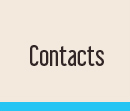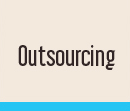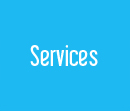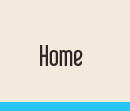
An Overview of the Process in Laymen's Terms
Here you'll find a non-technical description of how the talented professionals at Oceannet Software will create a tailored software application to meet your business needs. Please read it over and then call us if you'd like additional information.
Product Specifications
Even if you don't know exactly what you're looking for, we'll help you create detailed technical specifications. This might require identifying your businesses' needs, the desired characteristics and benefits of the software, and the ways in which IT supports your business aims. We will consider the advantages and disadvantages offered by the technology you're already using. We'll consider various prototypes and plans and discuss how we can best collaborate with you before drafting the specifications and a price quote for you to review.
At that point, we'll have a pretty clear understanding of the project's scope, so we'll begin making the requirements even more detailed so that we can dive into the development phase. Our focus on quality assurance begins now, very early in the process. We create prototypes and design sketches early on so that you can confirm whether we're on the right track.
Developing and Integrating the Software
We work closely with our clients through each stage of the project. This lets us ensure your satisfaction with our work and adapt to any changes that you may request. We appreciate receiving regular feedback so that we can modify our work as needed and better mitigate risks. We make sure that the final software product can be integrated smoothly with your existing business systems and procedures.
Our Methods for Quality Assurance
Each project has two clearly identified leaders: the project coordinator and the project manager. The project coordinator is in charge of documentation and communication. He or she serves as the contact person for the client. The coordinator's tasks include but are not limited to reports, project changes, tracking, and more. He or she speaks English fluently and in essence acts in the client's best interest throughout the project, challenging the rest of the project team to find ever-better solutions. Most other companies do not have anyone in this role, but at Oceannet Software we have found it to be one of the keys to our success. The project manager has more technical expertise, making sure that everything is completed on time and within the budget without sacrificing quality.
Each project is also monitored by a central oversight committee through which members of top management regularly observe the team's progress.
The Software Development Process
MSF and RUP have had a heavy influence on the software development process at Oceannet Software. However, we always remain focused on each client's specific requirements. Our iterative projects include each of the following components.
- Vision – In the first step, the client and our team work closely together to define the scope of the project, making sure that the IT work is closely aligned with the client's business objectives. We explore our options for the software architecture and begin risk identification and mitigation. This phase ends once we have agreed upon the direction for the project.
- Plan and Design – In this part of the process, our team begins fine-tuning the project requirements and planning how the development will actually take place. This phase ends once the client has approved the project plan.
- Development – In this phase, we move beyond mere planning and begin actually developing the new software or web application.
- Stability – In this phase, we ask the client for detailed feedback so that we can begin modifying the product to better meet your needs in future versions.
Oceannet Software has established standards for documentation, coding, and configurations, ensuring the consistently high quality of all that we do.
Open Communication
At Oceannet Software, we pride ourselves on having open communication with our clients. We use an online tool for recording the time spent on the project, and the client can review those logs whenever it is desired. Because we require that our team members fill out their timesheets promptly, you always have access to current data.
Managing Project Scope
When dealing with off-site projects, scope must always be monitored, evaluated, and adapted as necessary. At Oceannet Software, we have a detailed procedure for managing project scope that relies on the project manager and project coordinator understanding the client's needs and our proposed solution inside and out. We thoroughly document each step of the development process should questions arise in the future. Many of our project management activities are automated and tracked electronically.
Project Changes
Despite the best-laid plans, we know that our clients' needs sometimes change. In those situations, we work to accommodate their requests to change the software or system that is being developed. The client's identified point of contact should forward change requests to the Oceannet Software team as early as possible. We will consider the request and provide information about how it may affect the project's cost, timeframe, and interaction with existing business systems. Then the client can make an educated decision about whether to proceed with the change.
When making any project change, we follow these principles:
- We will not make a change that jeopardizes the system's integrity.
- We always maintain consistency between the user interface and the actions of the end users, so any changes must align with the styles that are already in use for the system.
- As with the rest of the project, any and all changes must be planned, documented, and executed with our unending commitment to quality and client satisfaction.
- Our records must contain a complete list and description of all the project changes.
- We must retain the coding that would allow us to revert to an earlier version of the software if needed.
- We will not make a project change that significantly impacts the work cycle in a negative way.
Information Sharing and Documentation
We keep thorough documentation for each project on a secure online site that our client is invited to access at any time. We usually use Microsoft SharePoint in order to do this.
Monitoring Progress
We have developed an in-house tool for monitoring our progress on each project. It gives us real-time updates and easy access to all our assigned tasks, resources, and progress. The client is also invited to access this tool online.
Risk Mitigation
We work on all our projects in a modern, two-story office building that is entirely secure. Security guards and finger print identification control who has access to the building around the clock.
Telecommunications
At Oceannet Software, we rely on a variety of communication methods. We use digital phone lines to speak with our clients. We have three ADSL high-speed links to providers of internet connectivity, ensuring that we're never offline.
Security Concerns
At Oceannet Software, all of our intellectual property, applications, networks, and systems are stored within a secure network architecture that has several characteristics of interest:
- Points of Connection – The internet and Oceannet Software's network are connected through external routers, which have packet filters for basic protection against traffic spoofing.
- Firewall – The firewall prevents attacks (DDoS, DoS) and penetration (access without authorization) into our network, filtering out spyware, worms, viruses, and more. It also monitors and controls internal traffic.
- Address Translation – Combined with our proxy, our translation function for the network address heightens security on our network for interactions between external resources and our LAN while still permitting FTP, web, mail, and related protocols.
- Tunnels – These help us connect with other public computing networks. The Ispec-based tunnels provide encryption for traffic with 64 or more bits. We also have a secure VPS between our office and those of our clients. By using more than one ISP and by balancing the load, we make sure that our network is always available. Furthermore, by separating the guest network from the one that our staff members use, the network remains confidential and secure. We run antivirus programs every day and update our hotfix package each week for maximum security.
- PartSecure – Our network contains PartSecure segments that serve as a protected firewall. We use this primarily for showing products to our clients.
- AAA Domain – The AAA (authentication, authorization, accounting) domain is based on MS Active Directory for MS and non-MS platforms. It logs all significant user actions and authenticates all users who have access, including our employees, partners, and clients.





